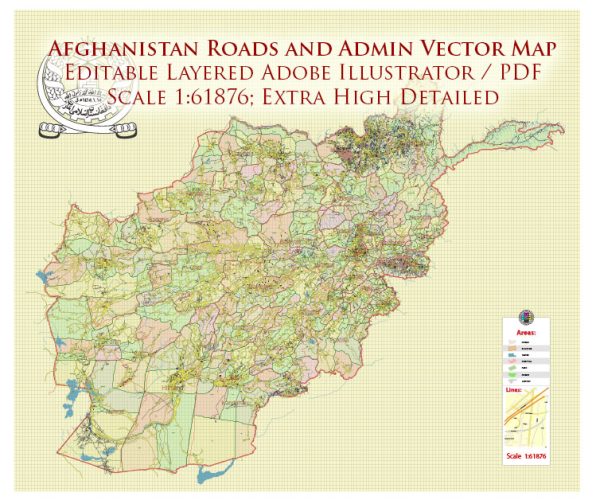Afghanistan’s geology is characterized by its complex and diverse geological history. The country’s geological features are the result of tectonic plate movements, mountain-building processes, and the interaction of various rock formations. Here is a brief description of Afghanistan’s geology:
- Tectonic Setting: Afghanistan is situated at the crossroads of several major tectonic plates, including the Indian Plate, Eurasian Plate, Arabian Plate, and the African Plate. The ongoing collision between the Indian Plate and the Eurasian Plate has played a significant role in shaping Afghanistan’s geology.
- Mountain Ranges: The country is dominated by numerous mountain ranges, with the Hindu Kush and the Pamir Mountains to the north and the Sulaiman Range and the Spin Ghar Mountains to the south. These mountains are the result of the ongoing tectonic collision, and they contain rocks of various ages and types.
- Rock Types: Afghanistan’s geology includes a wide range of rock types, such as sedimentary, metamorphic, and igneous rocks. The Hindu Kush region is known for its metamorphic rocks, while sedimentary rocks are found in various parts of the country. Igneous activity is relatively limited but can be found in some areas.
- Mineral Resources: Afghanistan is known to be rich in mineral resources, including deposits of copper, iron ore, gold, lithium, and rare earth elements. The country’s geology has attracted interest from mining and exploration companies, but political instability has hindered large-scale mining operations.
- Earthquakes: Due to its location along tectonic plate boundaries, Afghanistan is prone to seismic activity. Earthquakes are common, and they have caused significant damage in the past.
- Fossils: Afghanistan has also been the site of paleontological discoveries, with fossils dating back millions of years. Fossilized remains of prehistoric creatures have been found in the country.
- Water Resources: Afghanistan’s geology plays a crucial role in its water resources. The mountains capture and store water, and numerous rivers, such as the Kabul River and the Helmand River, flow through the country. These water sources are vital for agriculture and human settlements.
- Geological Challenges: Despite its geological richness, Afghanistan faces challenges related to the sustainable development of its mineral resources due to ongoing conflict, security issues, and lack of infrastructure.
In summary, Afghanistan’s geology is characterized by its diverse rock types, mountain ranges, and mineral resources, largely shaped by the tectonic interactions in the region. The geological features have both economic potential and pose geological hazards, such as earthquakes, which influence the country’s development and stability.


 Author: Kirill Shrayber, Ph.D.
Author: Kirill Shrayber, Ph.D.